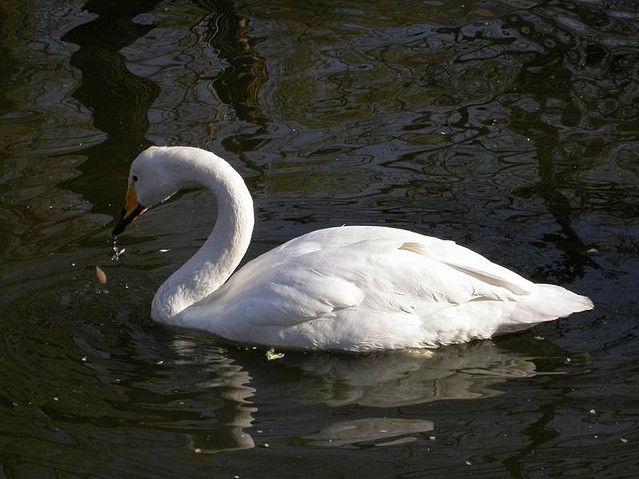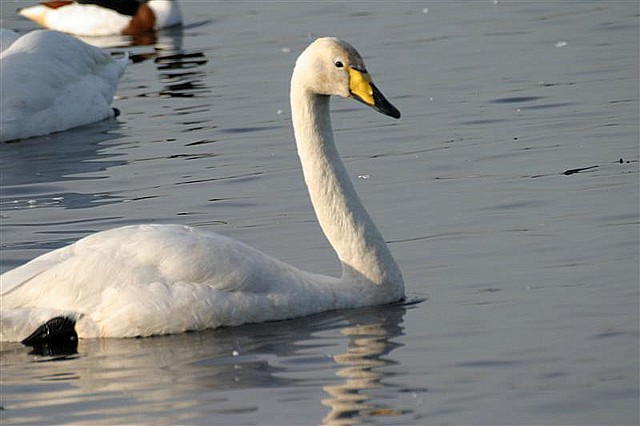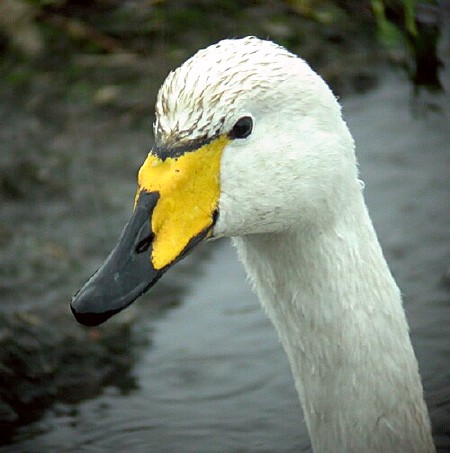Lessico
Cigno urlatore o musico
Cygnus cygnus

Whooper Swan
Scientific classification
Kingdom: Animalia
Phylum: Chordata
Class: Aves
Order: Anseriformes
Family: Anatidae
Genus: Cygnus
Species: Cygnus cygnus
Binomial name Cygnus cygnus (Linnaeus, 1758)
The Whooper Swan (Cygnus cygnus) is a large Northern Hemisphere swan. It is the Old World counterpart of the North American Trumpeter Swan.
The Whooper Swan is similar in appearance to the Bewick's Swan. However, it is larger, at a length of 140-160 cm (55-63 in), a wingspan of 205-235 cm (81-93 in) and a weight range of 8-15 kg (17.6-33 lbs). It has a more angular head shape and a more variable bill pattern that always shows more yellow than black (Bewick's Swans have more black than yellow).
Whooper swans require large areas of water to live in, especially when they are still growing, because their body weight cannot be supported by their legs for extended periods of time. The whooper swan spends much of its time swimming, straining the water for food, or eating plants that grow on the bottom.
Whooper swans have a deep honking call and, despite their size, are powerful fliers. Whooper swans can migrate many hundreds of miles to their wintering sites in northern Europe and eastern Asia. They breed in subarctic Eurasia, further south than Bewick's in the taiga zone. They are rare breeders in northern Scotland, particularly in Orkney, and no more than five pairs have bred there in recent years. This bird is an occasional vagrant to western North America. Icelandic breeders overwinter in England and Ireland, especially in the wildfowl nature reserves of the Royal Society for the Protection of Birds and of the Wildfowl and Wetlands Trust.
Whooper swans pair for life, and their cygnets stay with them all winter; they are sometimes joined by offspring from previous years. Their preferred breeding habitat is wetland, but semi-domesticated birds will build a nest anywhere close to water. Both the male and female help build the nest, and the male will stand guard over the nest while the female incubates. The female will usually lay 4-7 eggs (exceptionally 12). The cygnets hatch after about 36 days and have a grey or brown plumage. The cygnets can fly at an age of 120 to 150 days.


www.bsc-eoc.org/avibase/